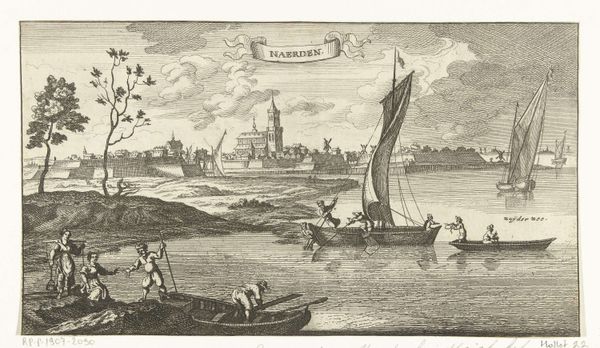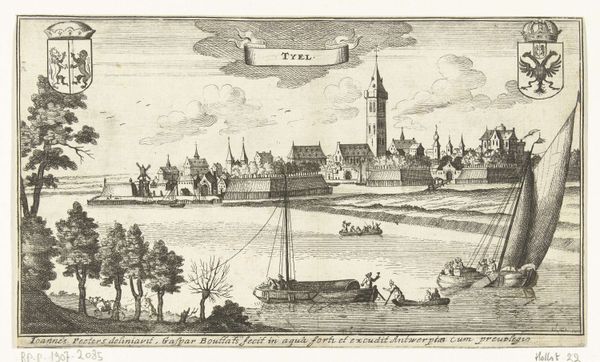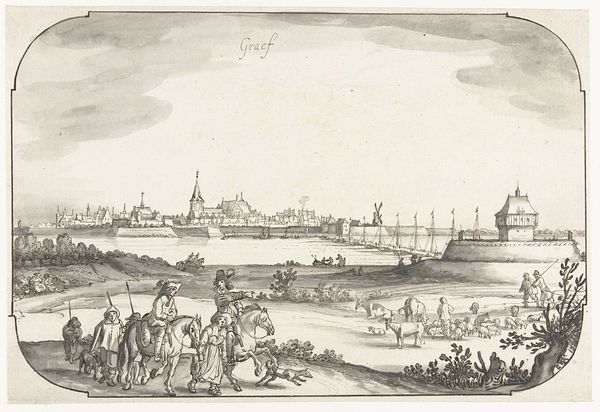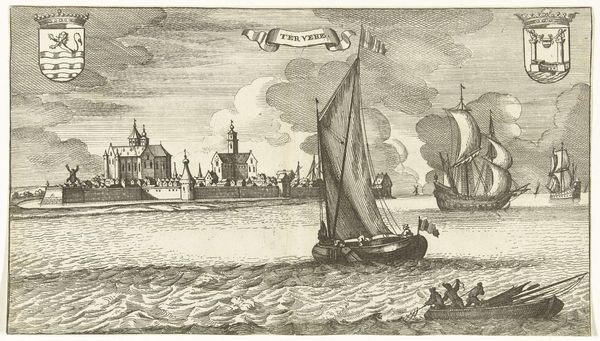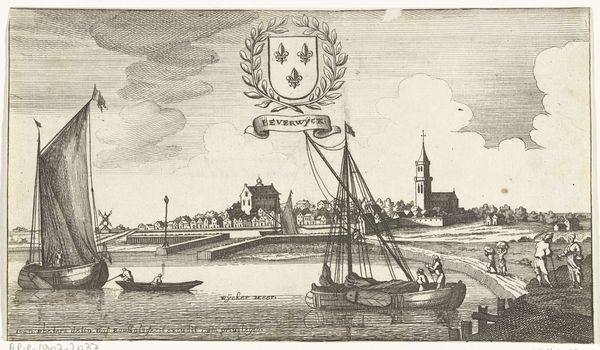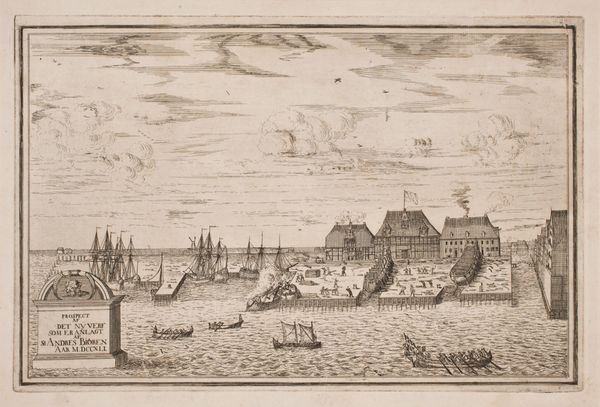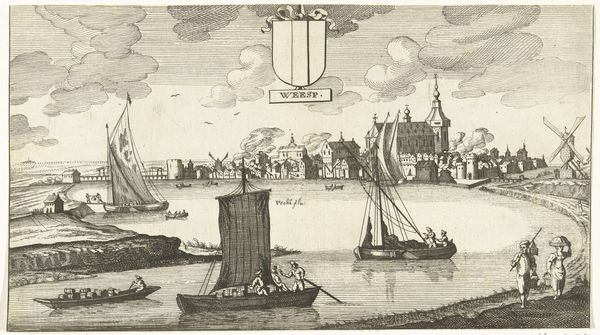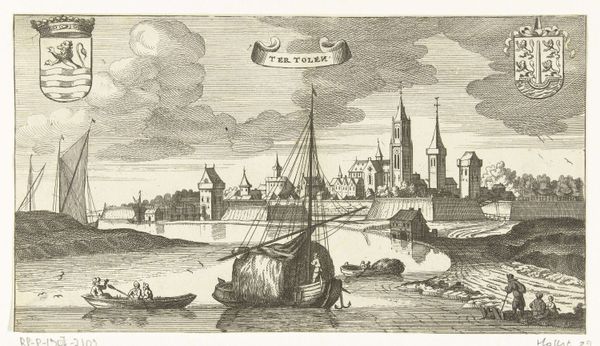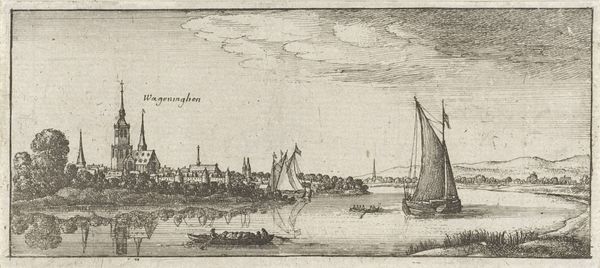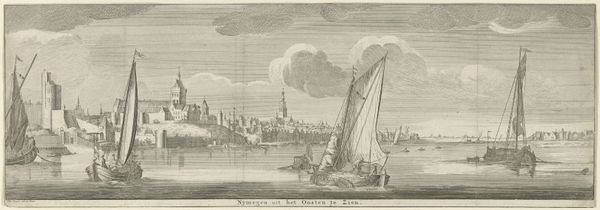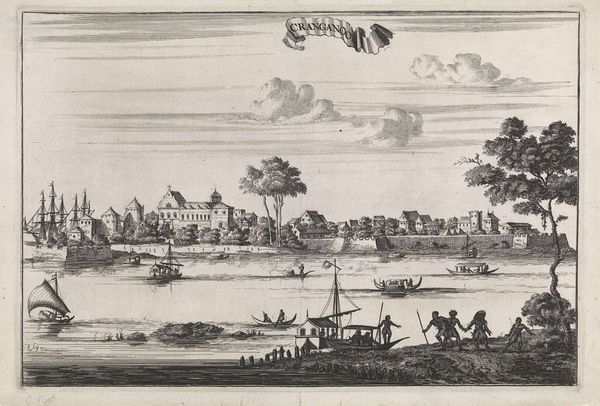
print, engraving
#
dutch-golden-age
# print
#
old engraving style
#
landscape
#
geometric
#
line
#
cityscape
#
engraving
Dimensions: height 257 mm, width 311 mm
Copyright: Rijks Museum: Open Domain
Curator: Welcome! We are standing before "Gezicht op Rhenen," an engraving from sometime between 1692 and 1714, currently held at the Rijksmuseum. The work is attributed to Thomas Doesburgh. Editor: It’s incredible the amount of detail rendered in what looks like an almost clinically precise, light-drenched scene. The composition feels balanced but static, like a stage set. Curator: It’s interesting that you note that, as I think understanding the labor and tools is important here. As a print, it's likely meant for widespread consumption. Doesburgh had to meticulously create a plate for printing, indicating a specialized, artisanal skill serving early Dutch capitalism by rendering cities desirable and thus economically viable. Editor: Absolutely. The composition, organized with such clarity and geometric precision, reflects more than simple commerce; note how he renders each structural component! The windmills, the church tower, the boats on the river—each object has its own discrete integrity. How Doesburgh achieves this with such subtle gradations of line weight is fascinating. Curator: Right, consider also that paper, ink, and the printing press all are elements in its production and dissemination. The affordability of prints compared to paintings enabled a broader audience to engage with art, challenging the elite art patronage system. Editor: I appreciate the formal tension between the calm skyline of Rhenen and the dynamic details of daily life, which offers this very satisfying sense of spatial organization, you know, this beautiful tension between foreground and background. Curator: It's compelling to consider how prints like these also acted as records of specific urban identities. The emphasis is not just aesthetic; it demonstrates Rhenen’s social structure and the lives of its residents, rendered within the frame of burgeoning economic activities. Editor: Well, considering our discussion, I have renewed interest in revisiting the way it so brilliantly portrays this cultural ethos by aesthetic form, almost as though form and purpose, art and commerce, find true confluence in this print. Curator: Indeed, thinking about the work in terms of its function as visual document is compelling as well, as the social meaning imbued through it provides much food for thought.
Comments
No comments
Be the first to comment and join the conversation on the ultimate creative platform.
